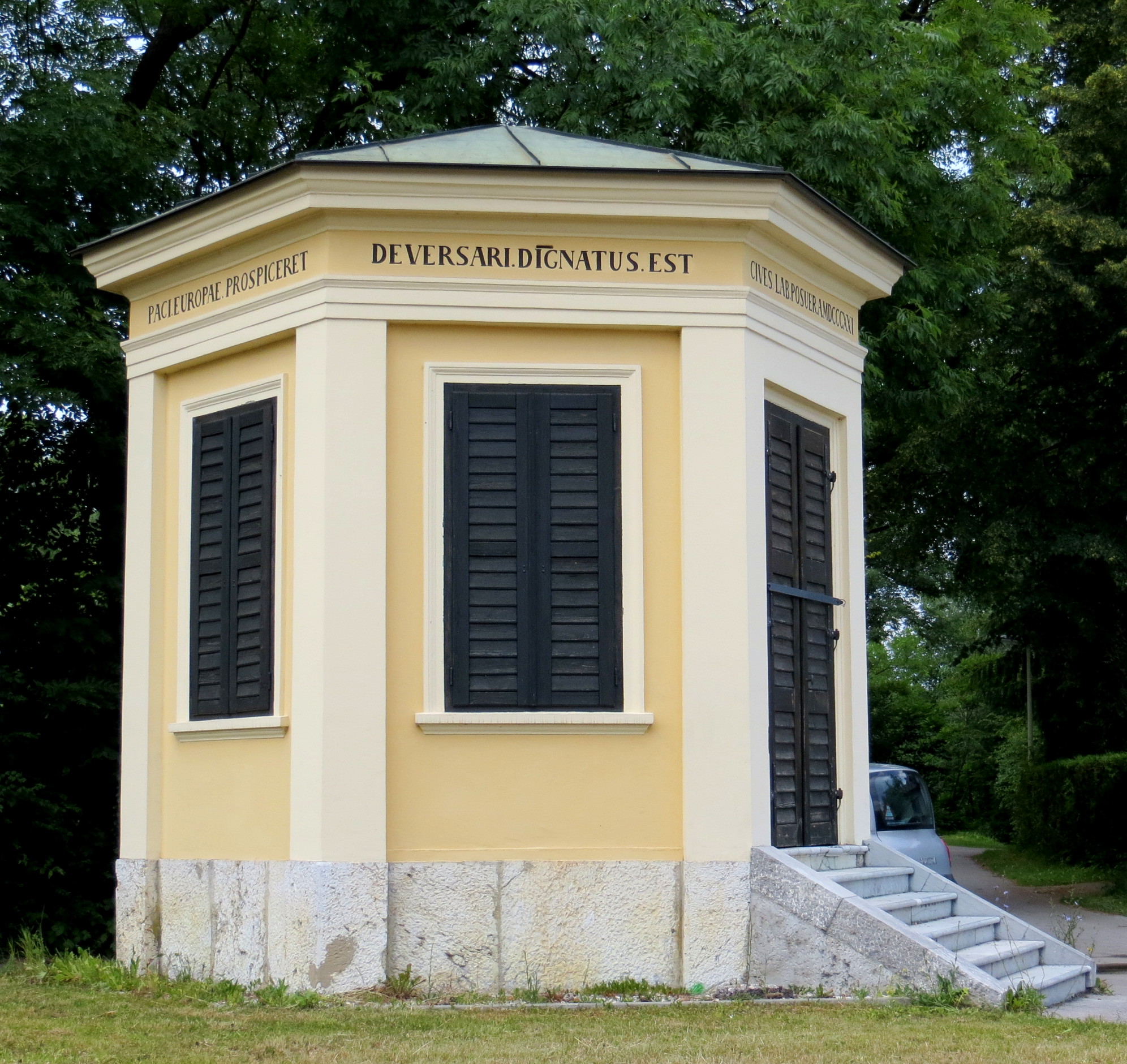Vič on:
[Wikipedia]
[Google]
[Amazon]
Vič (; german: Waitsch''Leksikon občin kraljestev in dežel zastopanih v državnem zboru,'' vol. 6: ''Kranjsko''. 1906. Vienna: C. Kr. Dvorna in Državna Tiskarna, p. 114.) is a former village in the western part of
 Vič is the oldest settlement in the immediate area;
Vič is the oldest settlement in the immediate area;
 *The Two Emperors Street Pavilion ( sl, Paviljon na Cesti dveh cesarjev) stands at the west end of Two Emperors Street () in the southwest part of Vič. It was built at the initiative of the Ljubljana town hall as a gift by the town's residents to
*The Two Emperors Street Pavilion ( sl, Paviljon na Cesti dveh cesarjev) stands at the west end of Two Emperors Street () in the southwest part of Vič. It was built at the initiative of the Ljubljana town hall as a gift by the town's residents to Slovenian Ministry of Culture register of national heritage
reference number ešd 18716
Vič on Geopedia
Former settlements in Slovenia {{Ljubljana-geo-stub
Ljubljana
Ljubljana (also known by other historical names) is the capital and largest city of Slovenia. It is the country's cultural, educational, economic, political and administrative center.
During antiquity, a Roman city called Emona stood in the ar ...
, the capital of Slovenia
Slovenia ( ; sl, Slovenija ), officially the Republic of Slovenia (Slovene: , abbr.: ''RS''), is a country in Central Europe. It is bordered by Italy to the west, Austria to the north, Hungary to the northeast, Croatia to the southeast, an ...
. It is part of the traditional region of Upper Carniola
Upper Carniola ( sl, Gorenjska; it, Alta Carniola; german: Oberkrain) is a traditional region of Slovenia, the northern mountainous part of the larger Carniola region. The centre of the region is Kranj, while other urban centers include Jeseni ...
and is now included with the rest of the municipality in the Central Slovenia Statistical Region
The Central Slovenia Statistical Region ( sl, Osrednjeslovenska statistična regija) is a statistical region in central Slovenia.
Geography
This is the second-largest region in terms of territory. It has a total area of 2,555 km², with a ...
.
Name
Vič was attested in written sources as ''Weyze'' in 1339, ''Weycz'' in 1414, and ''Weitsch'' in 1406, among other spellings. The origin of the name is uncertain. Possibilities include derivation from the noun ''*vič'' 'willow switches' or 'young woods', or from the personal name ''*Vitъ'', referring to an early inhabitant. Less likely possibilities include derivation from ''bič'' ' rushes' and Latin ''vicus'' 'village'. In the past the German name was ''Waitsch''.History
 Vič is the oldest settlement in the immediate area;
Vič is the oldest settlement in the immediate area; Glince
Glince (, german: Gleinitz or ''Gleinitz bei Waitsch'Amtsblatt zur Laibacher Zeitung''. 1857, no. 162 (20 July), p. 502.) is a former settlement in central Slovenia in the southwest part of the capital Ljubljana. It belongs to the Vič District ...
and Rožna Dolina
Rožna Dolina (; it, Valdirose, german: link=no, Rosenthal) is one of the four suburbs of the town of Nova Gorica in western Slovenia (the others being Solkan, Kromberk, and Pristava). It is on the border with Italy. Before 1947, it used to be ...
were settled later. In 1783, Vič had a population of 297 living in 43 houses. By 1925 the population of Vič had increased to 966, and by 1931 there were 1,330 people in the village.
Vič was annexed by the City of Ljubljana in 1935, ending its existence as an independent settlement. In 2010, Vič was heavily affected by floods.
Cultural heritage
Emperor Francis I
Francis I (Francis Stephen; french: François Étienne; german: Franz Stefan; 8 December 1708 – 18 August 1765) was Holy Roman Emperor, Archduke of Austria, Duke of Lorraine and Bar, and Grand Duke of Tuscany. He became the ruler of the Hol ...
, who celebrated his birthday in Ljubljana in 1821 while attending the Congress of Laibach
The Congress of Laibach was a conference of the allied sovereigns or their representatives, held in 1821 as part of the Congress System (the forerunner of the Concert of Europe) which was the decided attempt of the five Great Powers to settle inte ...
together with Alexander I of Russia
Alexander I (; – ) was Emperor of Russia from 1801, the first King of Congress Poland from 1815, and the Grand Duke of Finland from 1809 to his death. He was the eldest son of Emperor Paul I and Sophie Dorothea of Württemberg.
The son of ...
. The pavilion is built in the Empire style
The Empire style (, ''style Empire'') is an early-nineteenth-century design movement in architecture, furniture, other decorative arts, and the visual arts, representing the second phase of Neoclassicism. It flourished between 1800 and 1815 durin ...
and is one of the few surviving imperial structures in Ljubljana.
*The Robežnik Inn, also known as the Žabar Inn, is a U-shaped set of buildings at Vič Street (''Viška cesta'') nos. 48 and 50 in the historical village center. It consists of living quarters, an inn, and farm buildings. The structures have been adapted to modern use, but architectural elements from the 19th century are preserved.reference number ešd 18716
References
External links
*Vič on Geopedia
Former settlements in Slovenia {{Ljubljana-geo-stub